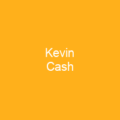Understanding Assets: The Heart of Financial Accounting
What exactly is an asset in financial accounting? It’s a resource owned or controlled by a business, with the potential to generate positive economic value. Think of it as the fuel that powers your company’s operations and growth.
Tangible vs Intangible Assets: The Dual Nature
The balance sheet records these assets in two main categories: tangible and intangible. Tangible assets are like the physical tools in a toolbox, while intangible assets are more like the invisible yet powerful ideas that drive innovation and market advantage.
Tangible Assets: The Physical Tools of Business
Current assets include cash, inventory, accounts receivable—essentially, what you can quickly turn into cash. Fixed assets, on the other hand, are long-term investments like land, buildings, and equipment that provide ongoing benefits.
Intangible Assets: The Invisible Powerhouses
Intangible assets might not have a physical form, but they’re incredibly valuable. Goodwill, intellectual property, and trademarks fall into this category. They give your business an edge in the market, making it harder for competitors to replicate.
The Accounting Equation: A Balance Sheet Blueprint
The accounting equation is the backbone of financial statements: Assets = Liabilities + Equity. This simple yet powerful formula helps you understand the financial health and stability of a company.
Current vs Non-Current Assets: Short-Term vs Long-Term Investments
What’s the difference between current and non-current assets? Current assets are those that can be converted into cash within one year, like cash in the bank or inventory. Non-current assets, such as property, plant, and equipment (PP&E), are long-term investments with a useful life of more than one year.
Fixed Assets: The Long-Term Investments
Fixed assets, also known as PP&E, include land, buildings, machinery, and IT equipment. These assets are written off over their anticipated lifespan through depreciation expenses, except for land which is not depreciated.
The Asset Heavy Model vs Light Asset Model Company: A Business Strategy
Is your company better suited to be an asset-heavy model or a light asset model? The choice depends on the industry and business strategy. Heavy asset models are common in sectors like manufacturing, engineering, and chemicals, while digital businesses like Airbnb, Uber, and Zomato operate as light asset models.
Intangible Assets: The Invisible Value
Intangible assets might be hard to evaluate but they’re crucial for a company’s success. Patents, copyrights, trademarks, and goodwill are all examples of intangible assets that can significantly impact your business’s value.
Tangible Assets: The Physical Substance
Tangible assets include physical items like buildings, vehicles, and equipment. They depreciate over time, meaning their value decreases as they age. Asset managers use deterioration modeling to predict future conditions and manage these assets effectively.
Wasting Assets: The Declining Value
A wasting asset is one that loses its value irreversibly over time, like vehicles or machinery. These assets may be treated differently for tax purposes compared to those that do not lose value.

In conclusion, understanding assets is crucial for any business. Whether you’re dealing with tangible or intangible assets, the key lies in managing them effectively to ensure your company’s long-term success and growth.
You want to know more about Asset?
This page is based on the article Asset published in Wikipedia (retrieved on March 9, 2025) and was automatically summarized using artificial intelligence.





